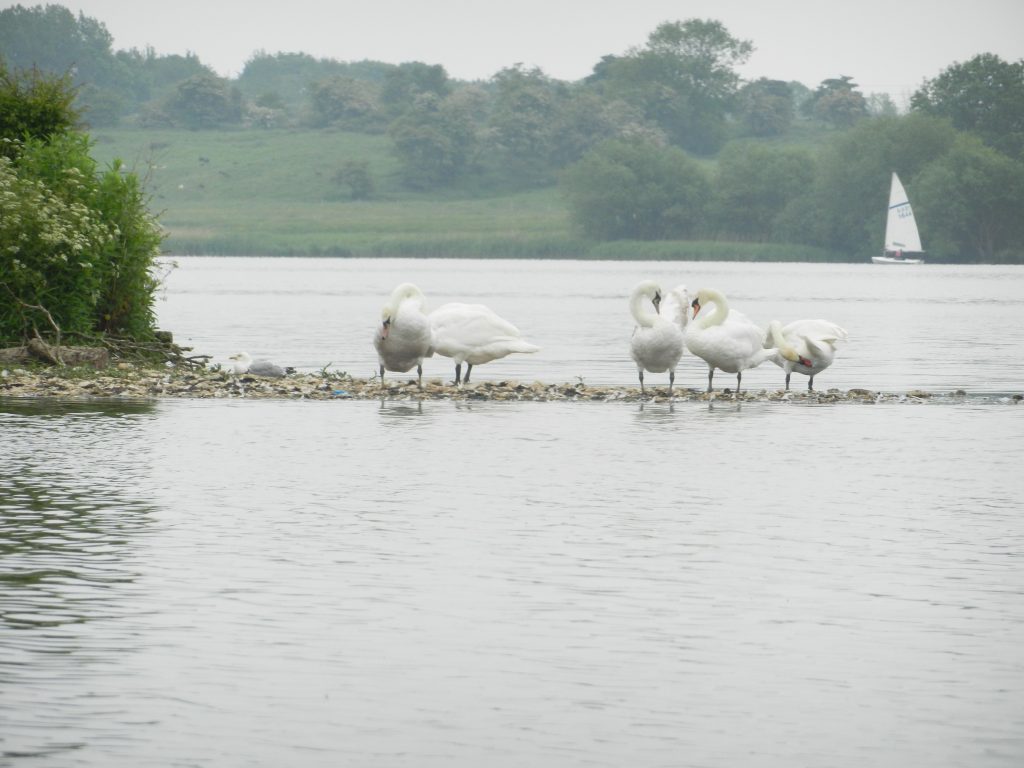
There are two natural islands in Hornsea Mere, Swan Island (see a bit of above) and, the smaller, Lady Island. The photo above shows how meres developed in lower land between undulations which became vegetated. Even millennia ago the current-day Hornsea Mere would have been a large example, many would have been much smaller.
From about 11,000B.C. successions of flora would have colonised the higher ground next to the meres, lime, oak and elm trees are mentioned in the Bulletin (s.p.b.). Fish and wildfowl would have colonised the meres and ‘their exploitation by man dates back to Mesolithic times 8300 – 4300B.C’. At this point the Bulletin references the excavation at Star Carr, this a site at the edge of the once Lake Pickering, not in Holderness. But the Team go on to state that similar finds to those found at Star Carr have been found at Skipsea, Brandesburton, Hornsea and Catfoss (in Holderness), this then evidence of early pre-historic occupation by Man. As yet there is no evidence of occupation on Holderness by a tribal unit as was the case on the Yorkshire Wolds. An excavation of a much later site at Barmston (dated to late Bronze Age) revealed a timber platform jutting into the mere (now no more). Whether this was to exploit the resouces of the mere or as some form of defence or for other purposes is speculation. Evidence of similar structures of a similar date have been found at Skipsea and Ulrome, these three being relatively close together and suggesting a local technology.
Although I know of no specific evidence it seems likely that the early colonisers of Holderness would have developed some boat-building skills, capable of producing coracle-like boats. Maybe they just waded into the relatively shallow waters.
By the early Middle Ages it seems likely that some meres had already dried-up and ‘Anglian and Danish settlers cleared much of the forest cover between the fifth and ninth centuries’ (Bulletin) thus accelerating silting-up of meres from soil erosion.